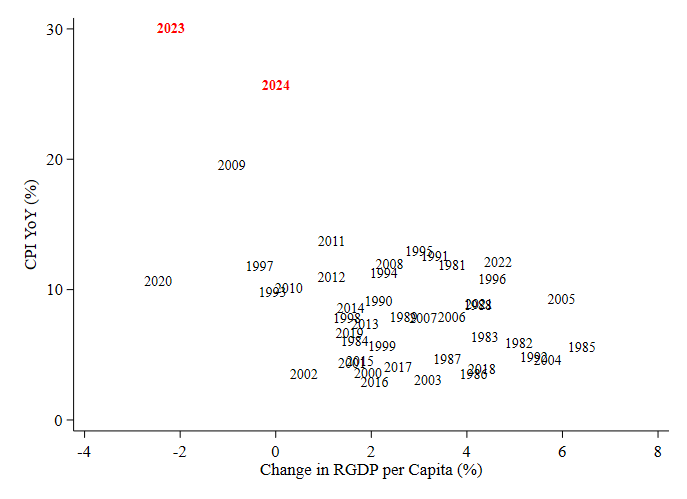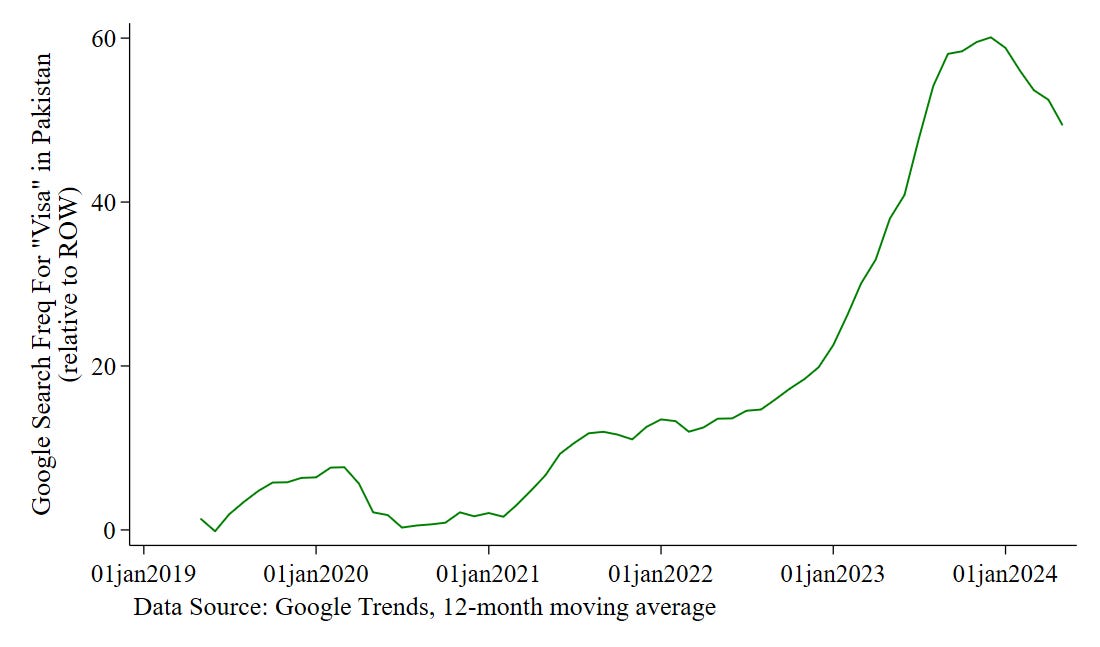Poverty is a terrible thing - but it always comes with a silver lining. Poor people are willing to work for less, and knowledge they can use to be more productive is already out there. If only a government can help harness this natural advantage, growth and prosperity follows, as countries like Vietnam and Korea have shown.
To put it differently, it takes effort to suppress growth for long periods of time. But some countries manage to do so through their collective decisions, and remain stuck in what economists refer to as a “poverty trap”. There is increasing evidence that Pakistan is stuck in such a trap due to decades of malpractice.
The black line below plots Pakistan’s GDP since 1980. It’s log-scale, meaning a straight line reflects constant growth rate. The straight red line depicts Pakistan’s growth rate during the 1980’s. The increasing separation of black line from red shows that Pakistan’s growth rate has progressively declined since the 80’s. In fact, the black line is almost flattening in recent years, depicting a stagnating economy - Pakistan is stuck in a poverty trap.
The last two years have been the worse in Pakistan’s economic history. I plot annual inflation and per-capita GDP growth for each year since 1980 below. 2023 and 2024 stand-out - never has inflation been this high and growth this low. The closest years are global crises of 2009 and 2020, but the recent two years are purely the country’s own making.
Is this just statistics? I have personally never seen as much hopelessness on the streets of Pakistan as now - it seems that anyone who can, wants to leave the country. There is some credence to this perception of mine. The chart below plots how frequently Pakistanis search for the word “visa” on google relative to the rest of the world. The number of people searching for visas abroad has skyrocketed.
The thing about poverty traps is that they are “traps” - meaning incremental change cannot take you out of your misery. The only way out of poverty traps is through a big policy change - a change that is coordinated and credible over a sustained period of time. I’ll talk about what this means in the future.
For now, it’s business as usual in Pakistan. And that is terrible news for its people.
(Welcome to my first post on substack - if you would like to receive future posts via email, you can subscribe below)







Looking forward to reading your future post Atif Saheb
Atif sahib, thank you very much for starting this series. It is most insightful and impressive - the detail with which you have tackled the topics.